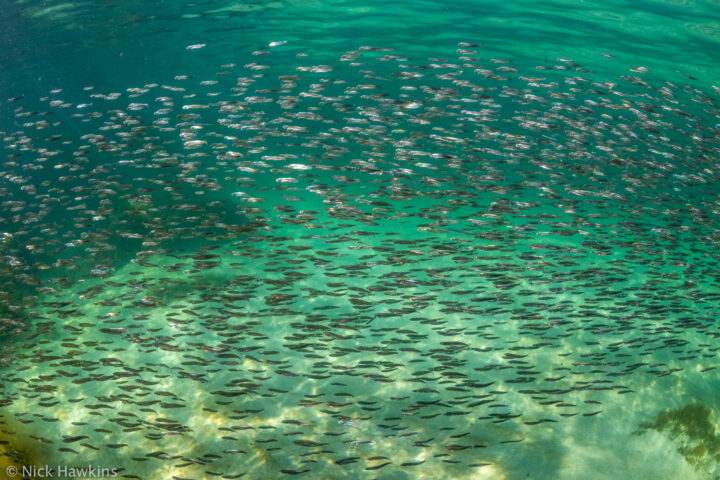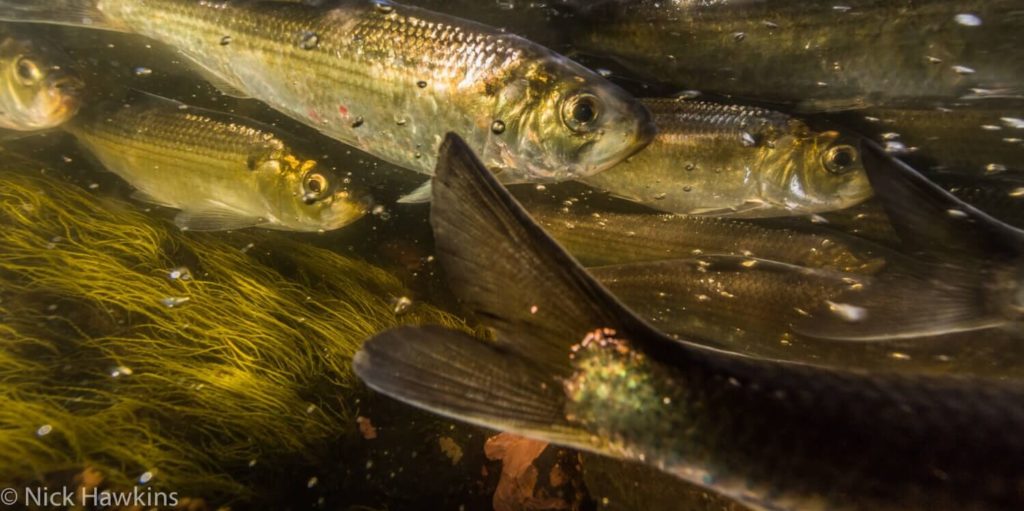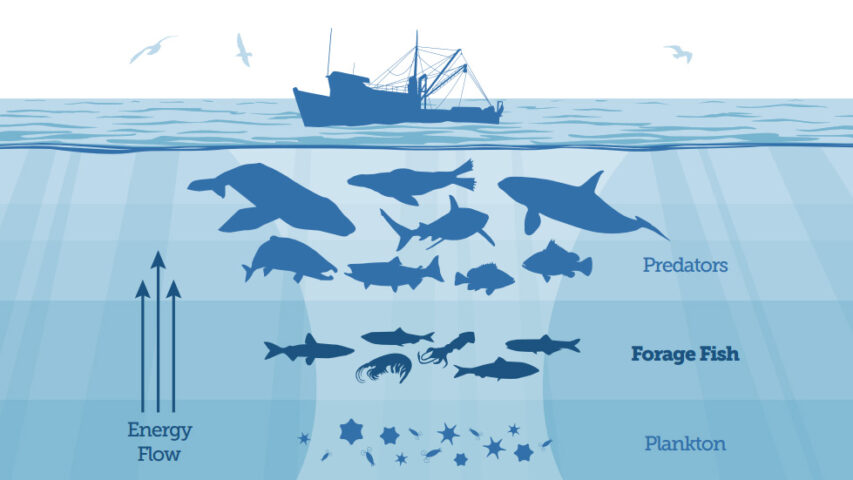Often ‘upstaged’ in the public eye by their larger, more charismatic marine neighbours, forage fish are critical to the health of our ocean ecosystem
What types of animals come to mind when you think about the ocean?
You wouldn’t be alone if your answer includes whales, tuna, seals, puffins, or other large, iconic species. In the conservation world, those photogenic species are sometimes called ‘charismatic megafauna.’
Charismatic megafauna are animals that people might describe as beautiful, impressive, or cute. They catch the public’s attention, are recognizable, and are often at the top of their respective food chains.
A North Atlantic right whale puts on a spectacular show in the Bay of Fundy. Submitted video.
These species are critically important parts of food webs, making their protection and conservation essential, but we also need to consider and protect a lesser known, sometimes overlooked category: the animals that serve as food sources for these charismatic species. In marine conservation, that’s where forage fish come in.
What are forage fish?
Forage fish are small to medium schooling fish species like herring, alewife, mackerel, and capelin. They eat small (often microscopic) plants and animals found in the water, while trying to avoid being eaten by their predators which include marine mammals, seabirds, large fish, and people.
Forage fish species reproduce quickly and occupy an important position in marine food webs, providing a vital link between large predators and things like phytoplankton and zooplankton.
This means that forage fish are important for energy transfer throughout the food web, and declines in forage fish populations can have harmful and widespread impacts.

What's the problem?
Many forage fish populations in Atlantic Canada are in decline and under stress, to the point that the federal government has even closed some forage fisheries this year, with more under consideration.
When people fish for forage fish, it is often to use them as bait for larger, more commercially-viable catches, or for use as fish meal and oil in the aquaculture industry or other sectors.
Forage fish populations undergo fluctuations naturally, a process that is understudied and exacerbated by fishing and the many impacts of climate change.
What can we do about it?
Organizations like the Conservation Council and many of our partners have been working to bring attention to the importance of forage fish and their management.
We urge government to collect more information about forage fish stocks and to work to rebuild depleted stocks. We’re also supporting the Peskotomuhkati Nation’s efforts to restore native sea-run fish in the Skutik Watershed.
Currently, Conservation Council staff are working on a study to examine the restoration potential for gaspereau, a herring-like species that spawns in freshwater rivers and lakes, throughout the Maritime provinces. We look forward to bringing you the results of this important work!


